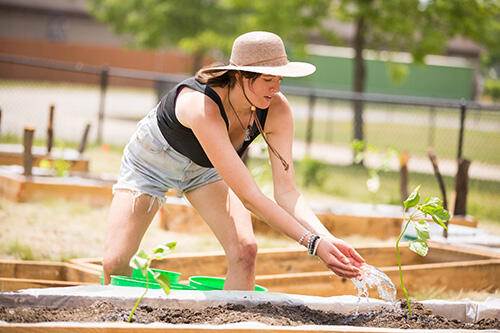
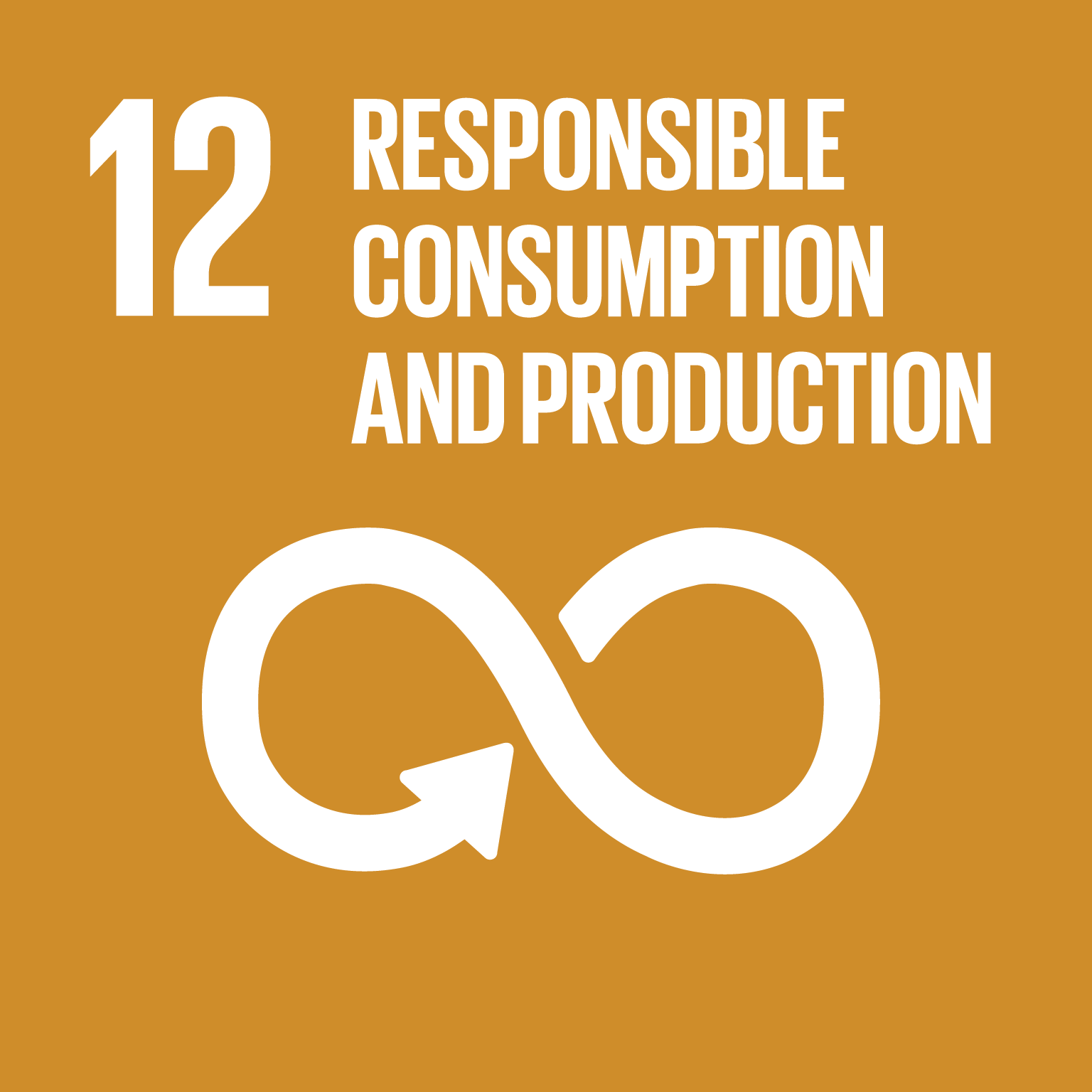
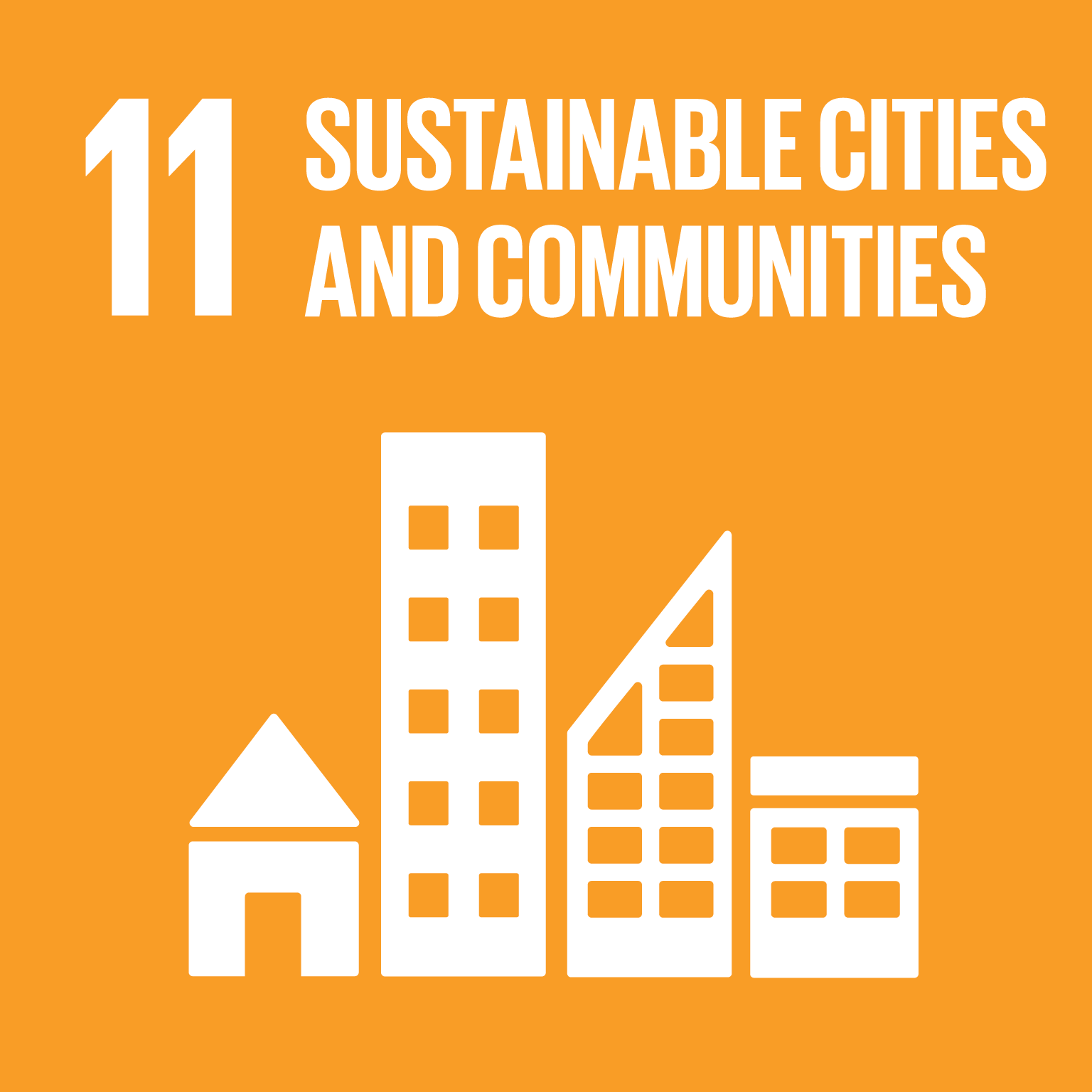
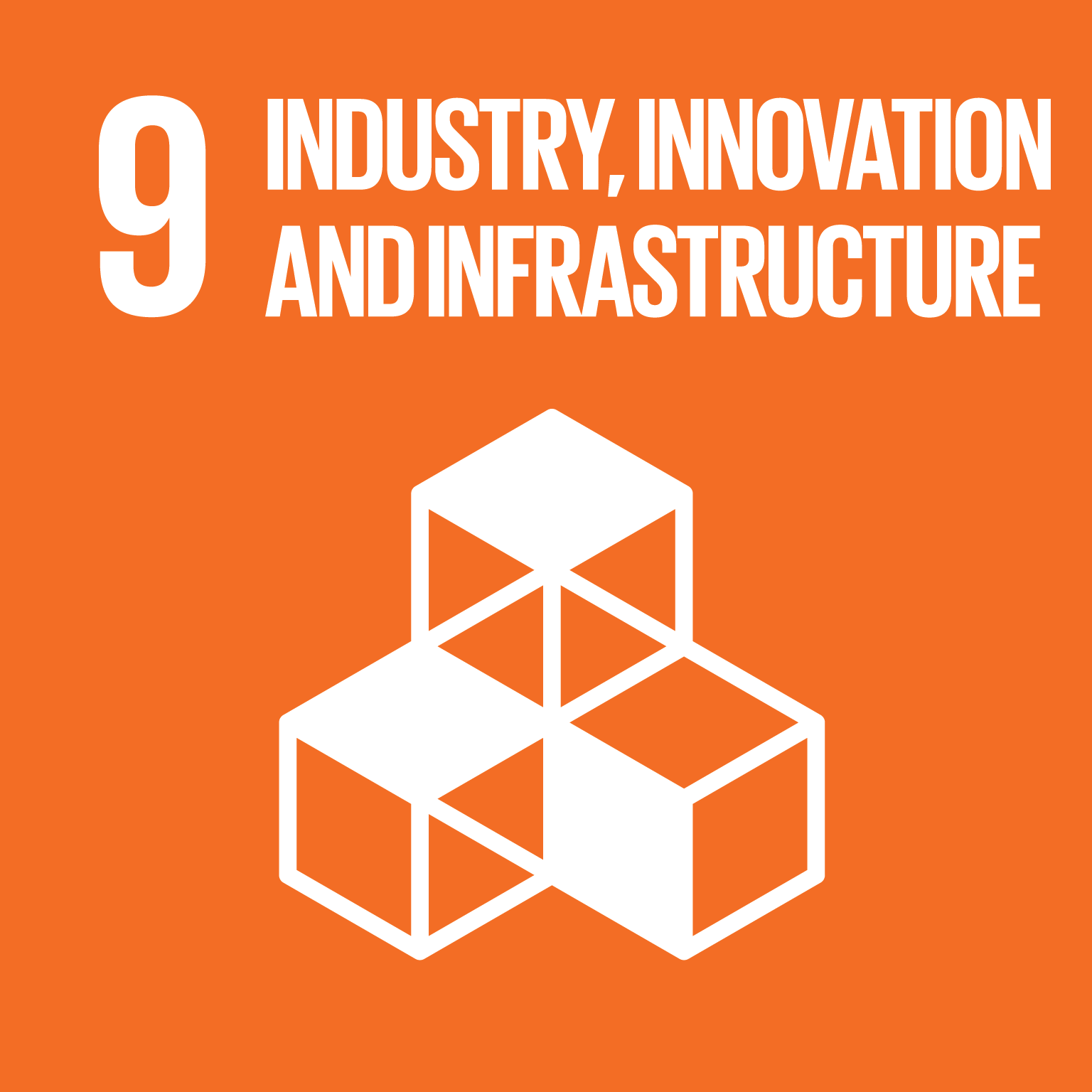
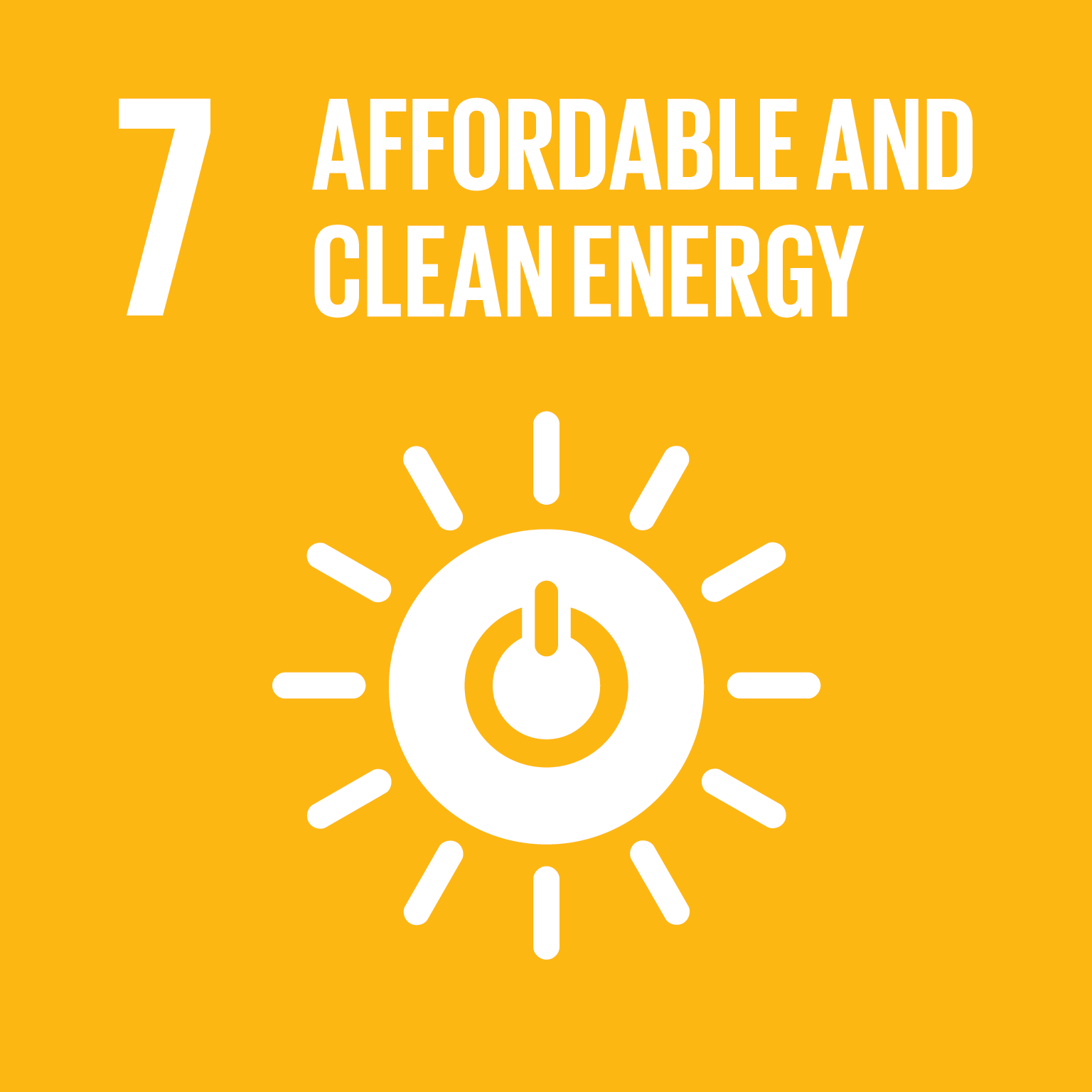 Geneseo is committed to being more sustainable on campus, and in the community. This feature, which originally appeared in the Geneseo Scene magazine, explores how the campus is sowing the seeds of ingenuity and better earth practices through student experiment and learning.
Geneseo is committed to being more sustainable on campus, and in the community. This feature, which originally appeared in the Geneseo Scene magazine, explores how the campus is sowing the seeds of ingenuity and better earth practices through student experiment and learning.
His research students are busy, hooking up sensors and batteries and figuring out how to heat a building with empty soda cans.
Before Distinguished Professor of Physics Stephen Padalino leaves the lab, he urges the students to impress a summer visitor with the breadth of their mission.
“Make it sound like it’s really important,” Padalino says with a smile, “that the future of the free world hands in the balance.”
Padalino pauses, reflects upon his statement and turns serious.
“I actually genuinely believe the future of the world does hang in the balance,” he says, going on to explain that something must be done to deal with global warning and other environmental challenges.
So there you have it — a handful of students tucked away in a lab in Geneseo’s Integrated Science Center have been given a simple challenge: Save the world. In very tangible ways, their work in the eGarden project on campus can do a lot in that arena.
Padalino and a group of students started the campuswide project four years ago. It now involves several departments, offices and groups and hosts a series of experimental efforts that do everything from harnessing solar and wind power to using the larvae of black soldier flies to compose waste food as part of a process that could give Geneseo its own farm-to-table dining.
Funded by the college’s Office of Sustainability, as well as by state and the federal sources, the project has the noble goal of reducing the college’s use of non-renewable energy and making Geneseo more self-sustaining.
What works in Geneseo could work elsewhere.
The project fits in with college’s mission and that of the State University system, which is committed to reducing system-wide, non-renewable energy consumption by 30 percent by 2020. It is one of many initiatives undertaken by the college, including heating and cooling newer buildings with geothermal wells and using collected rainwater.
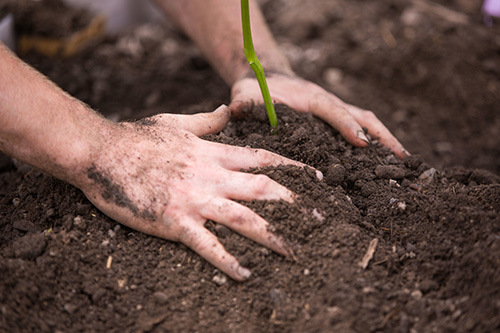 Dan DeZarn, director of sustainability, coordinates the different groups taking part in the eGarden project. “Its largest asset is that it has all of these different entities involved,” he says, “and its largest obstacle is having all these entities. But it’s gaining momentum. And when students get involved, they begin to see all the connections.”
Dan DeZarn, director of sustainability, coordinates the different groups taking part in the eGarden project. “Its largest asset is that it has all of these different entities involved,” he says, “and its largest obstacle is having all these entities. But it’s gaining momentum. And when students get involved, they begin to see all the connections.”
That’s an important message of the eGarden, says DeZarn: One person, one department can’t do it all. Sustainability has to be a campuswide initiative.
The “e” in eGarden stands for energy, Padalino says, and the word it introduces has a least two meanings. For sure, the hope is to produce energy for campus use from non-polluting sources. Beyond this, there’s the energy that Padalino and his team of students are applying to the task.
Finally, there’s the other part of the name: The project is a garden, a place to grow ideas, to see what works and what doesn’t.
The project is a marathon, not a sprint. It began when Padalino and his students urged the college to expand a sustainability effort beyond the planned erection of a large wind turbine.
Thus, the wind turbine is a piece in a larger puzzle. It stands in the southwest corner of the campus to produce electricity for the newly erected eGarden barn, a place for project experiments. There are also two large solar arrays to produce electricity, as well as two arrays of some heat-collecting tubes, one made from drain pipes. Near them are raised beds for vegetable gardens.
Seven students were working on the project this summer. Five of them were funded by the college’s sustainability account and two were funded by a grant from the National Science Foundation (NSF) Research Experience for Undergraduates.
Their lab work is quiet and methodical. “It’s not fast-paced,” says NSF grant recipient Alissa Redman, a student at Monroe Community College. “But you can definitely see it grow slowly.”
Redman’s piece of the puzzle is a MacGyver-like project to collect heat from the sun using first an array or panel made up of a rain spouts. That heat is then stored in an insulated barrel full of perforated soda cans. The stored heat is then be used to keep a greenhouse warm. The project proves that items often taken for granted and often discarded can be put to remarkable reuse.
At a table away from Redman, Jake Rose ’17, is working on a portable Wi-Fi transmitter. Using the wind and the sun, he’ll generate electricity that he’ll store in a battery. The battery will power a Wi-Fi signal that will be sent to places beyond the reach of campus W-Fi.
“The best thing about this is you create something in the real world,” says Rose, who at the moment is figuring out how to keep a small wind turbine steady. (It vibrates. It can fall.)
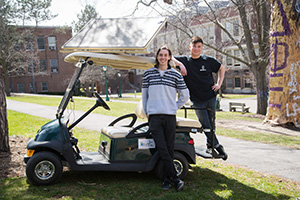 Brandon Mark ’16, a member of the eGarden team since he was a freshman, is headed to Rochester Institute of Technology in the fall for graduate work in engineering, but he has stayed on at Geneseo during the summer to work on the project.
Brandon Mark ’16, a member of the eGarden team since he was a freshman, is headed to Rochester Institute of Technology in the fall for graduate work in engineering, but he has stayed on at Geneseo during the summer to work on the project.
He was a key member of the team that created a solar-powered golf cart, a retrofitted vehicle that once roamed a golf club. The technology that keeps it running about the campus could be applied to other vehicles.
Hopping in the cart, Mark scoots down to the eGarden barn to check on progress there. The barn, which has been financed by Campus Auxiliary Services, will be used for a variety of purposes including the composting of some of the waste from food service operations. The process involves the use of the larvae of black soldier flies.
Here’s the plan: The flies eat the food and produce excrement that becomes fertilizer. The fertilizer will be used in growing vegetables in the raised garden beds. Completing the circle, the vegetables can be served in campus dining halls.
Of course, success or failure depends upon the black soldier flies, and Mark Scott, executive director of CAS, says that determining their taste preference hasn’t been easy. “Just like humans, the flies are fickle about what they eat,” he says.
But the eGarden project is all about giving the students some real-world challenges, he notes, and composting is about as real world as you can get.
Scott remembers that, when he arrived at Geneseo, then President Christopher Dahl told him that everyone who works at the school has a responsibility to help educate the students. Thus CAS has signed onto the project knowing that it will reap rewards. “This is Geneseo,” says Scott. “We’ll figure it out.”
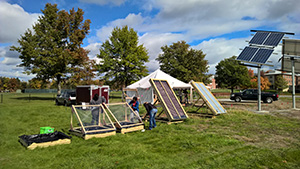 And where do things go from here?
And where do things go from here?
The short-term goal is to get the wind turbine up and generating to produce energy and serve as a visible symbol of the project, says DeZarn.
There’s also a plan to make use of waste cooking oil from the dormitories as a heat source. Certainly, there’s the hope of growing more and more vegetables. And the ideas just keep coming.
“The eGarden is something that actually is never going to be done.” DeZarn says. “It changes and evolves over time.“ In other words, when it comes to sustainability, Geneseo is in it for the long haul.
— By Jim Memmott
—Read this story and others in the latest issue of the Scene.